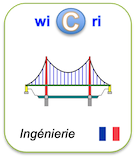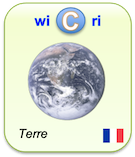Abell 370 revisited: refurbished Hubble imaging of the first strong lensing cluster
Identifieur interne : 000849 ( Main/Corpus ); précédent : 000848; suivant : 000850Abell 370 revisited: refurbished Hubble imaging of the first strong lensing cluster
Auteurs : J. Richard ; J.-P. Kneib ; M. Limousin ; A. Edge ; E. JulloSource :
- Monthly Notices of the Royal Astronomical Society: Letters [ 1745-3925 ] ; 2010-02.
Abstract
We present a strong lensing analysis of the galaxy cluster Abell 370 (z= 0.375) based on the recent multicolour images by Advanced Camera for Surveys obtained as part of the Early Release Observation (ERO) that followed the Hubble Service Mission #4. Back in 1987, the giant gravitational arc (z= 0.725) in Abell 370 was one of the first pieces of evidence that massive clusters are dense enough to act as strong gravitational lenses. The new observations reveal in detail its disclike morphology, and we show that it can be interpreted as a complex five-image configuration, with a total magnification factor of 32 ± 4. Moreover, the high-resolution multicolour information allowed us to identify 10 multiply imaged background galaxies. We derive a mean Einstein radius of θE= 39 ± 2 arcsec for a source redshift at z= 2, corresponding to a mass of M(<θE) = 2.82 ± 0.15 × 1014 M⊙ and M(<250 kpc) = 3.8 ± 0.2 × 1014 M⊙, in good agreement with Subaru weak-lensing measurements. The typical mass model error is smaller than 5 per cent, a factor of 3 of improvement compared to the previous lensing analysis. Abell 370 mass distribution is confirmed to be bimodal with very small offset between the dark matter, the X-ray gas and the stellar mass. Combining this information with the velocity distribution reveals that Abell 370 is likely the merging of two equally massive clusters along the line of sight, explaining the very high-mass density necessary to efficiently produce strong lensing. These new observations stress the importance of multicolour imaging for the identification of multiple images which is key to determining an accurate mass model. The very large Einstein radius makes Abell 370 one of the best clusters to search for high-redshift galaxies through strong magnification in the central region.
Url:
DOI: 10.1111/j.1745-3933.2009.00796.x
Links to Exploration step
ISTEX:AD2050B2A9E0A9240D68A7822694B82336C925AFLe document en format XML
<record><TEI wicri:istexFullTextTei="biblStruct"><teiHeader><fileDesc><titleStmt><title xml:lang="en">Abell 370 revisited: refurbished Hubble imaging of the first strong lensing cluster</title><author><name sortKey="Richard, J" sort="Richard, J" uniqKey="Richard J" first="J." last="Richard">J. Richard</name><affiliation><mods:affiliation>Department of Physics, Institute for Computational Cosmology, Durham University, South Road, Durham DH1 3LE</mods:affiliation></affiliation><affiliation><mods:affiliation>E-mail: johan.richard@durham.ac.uk</mods:affiliation></affiliation></author><author><name sortKey="Kneib, J P" sort="Kneib, J P" uniqKey="Kneib J" first="J.-P." last="Kneib">J.-P. Kneib</name><affiliation><mods:affiliation>Laboratoire d'Astrophysique de Marseille, CNRS – Université Aix-Marseille, 38 rue Frédéric Joliot-Curie, 13388 Marseille Cedex 13, France</mods:affiliation></affiliation></author><author><name sortKey="Limousin, M" sort="Limousin, M" uniqKey="Limousin M" first="M." last="Limousin">M. Limousin</name><affiliation><mods:affiliation>Laboratoire d'Astrophysique de Marseille, CNRS – Université Aix-Marseille, 38 rue Frédéric Joliot-Curie, 13388 Marseille Cedex 13, France</mods:affiliation></affiliation><affiliation><mods:affiliation>Dark Cosmology Centre, Niels Bohr Institute, University of Copenhagen, Juliane Maries Vej 30, 2100 Copenhagen, Denmark</mods:affiliation></affiliation></author><author><name sortKey="Edge, A" sort="Edge, A" uniqKey="Edge A" first="A." last="Edge">A. Edge</name><affiliation><mods:affiliation>Department of Physics, Institute for Computational Cosmology, Durham University, South Road, Durham DH1 3LE</mods:affiliation></affiliation></author><author><name sortKey="Jullo, E" sort="Jullo, E" uniqKey="Jullo E" first="E." last="Jullo">E. Jullo</name><affiliation><mods:affiliation>Jet Propulsion Laboratory, Caltech, MS 169-327, Oak Grove Dr, Pasadena CA 91109, USA</mods:affiliation></affiliation></author></titleStmt><publicationStmt><idno type="wicri:source">ISTEX</idno><idno type="RBID">ISTEX:AD2050B2A9E0A9240D68A7822694B82336C925AF</idno><date when="2010" year="2010">2010</date><idno type="doi">10.1111/j.1745-3933.2009.00796.x</idno><idno type="url">https://api.istex.fr/document/AD2050B2A9E0A9240D68A7822694B82336C925AF/fulltext/pdf</idno><idno type="wicri:Area/Main/Corpus">000849</idno></publicationStmt><sourceDesc><biblStruct><analytic><title level="a" type="main" xml:lang="en">Abell 370 revisited: refurbished Hubble imaging of the first strong lensing cluster</title><author><name sortKey="Richard, J" sort="Richard, J" uniqKey="Richard J" first="J." last="Richard">J. Richard</name><affiliation><mods:affiliation>Department of Physics, Institute for Computational Cosmology, Durham University, South Road, Durham DH1 3LE</mods:affiliation></affiliation><affiliation><mods:affiliation>E-mail: johan.richard@durham.ac.uk</mods:affiliation></affiliation></author><author><name sortKey="Kneib, J P" sort="Kneib, J P" uniqKey="Kneib J" first="J.-P." last="Kneib">J.-P. Kneib</name><affiliation><mods:affiliation>Laboratoire d'Astrophysique de Marseille, CNRS – Université Aix-Marseille, 38 rue Frédéric Joliot-Curie, 13388 Marseille Cedex 13, France</mods:affiliation></affiliation></author><author><name sortKey="Limousin, M" sort="Limousin, M" uniqKey="Limousin M" first="M." last="Limousin">M. Limousin</name><affiliation><mods:affiliation>Laboratoire d'Astrophysique de Marseille, CNRS – Université Aix-Marseille, 38 rue Frédéric Joliot-Curie, 13388 Marseille Cedex 13, France</mods:affiliation></affiliation><affiliation><mods:affiliation>Dark Cosmology Centre, Niels Bohr Institute, University of Copenhagen, Juliane Maries Vej 30, 2100 Copenhagen, Denmark</mods:affiliation></affiliation></author><author><name sortKey="Edge, A" sort="Edge, A" uniqKey="Edge A" first="A." last="Edge">A. Edge</name><affiliation><mods:affiliation>Department of Physics, Institute for Computational Cosmology, Durham University, South Road, Durham DH1 3LE</mods:affiliation></affiliation></author><author><name sortKey="Jullo, E" sort="Jullo, E" uniqKey="Jullo E" first="E." last="Jullo">E. Jullo</name><affiliation><mods:affiliation>Jet Propulsion Laboratory, Caltech, MS 169-327, Oak Grove Dr, Pasadena CA 91109, USA</mods:affiliation></affiliation></author></analytic><monogr></monogr><series><title level="j">Monthly Notices of the Royal Astronomical Society: Letters</title><title level="j" type="abbrev">MNRAS</title><idno type="ISSN">1745-3925</idno><idno type="eISSN">1745-3933</idno><imprint><publisher>Blackwell Publishing Ltd</publisher><pubPlace>Oxford, UK</pubPlace><date type="published" when="2010-02">2010-02</date><biblScope unit="volume">402</biblScope><biblScope unit="issue">1</biblScope><biblScope unit="page" from="L44">L44</biblScope><biblScope unit="page" to="L48">L48</biblScope></imprint><idno type="ISSN">1745-3925</idno></series><idno type="istex">AD2050B2A9E0A9240D68A7822694B82336C925AF</idno><idno type="DOI">10.1111/j.1745-3933.2009.00796.x</idno></biblStruct></sourceDesc><seriesStmt><idno type="ISSN">1745-3925</idno></seriesStmt></fileDesc><profileDesc><textClass></textClass><langUsage><language ident="en">en</language></langUsage></profileDesc></teiHeader><front><div type="abstract" xml:lang="en">We present a strong lensing analysis of the galaxy cluster Abell 370 (z= 0.375) based on the recent multicolour images by Advanced Camera for Surveys obtained as part of the Early Release Observation (ERO) that followed the Hubble Service Mission #4. Back in 1987, the giant gravitational arc (z= 0.725) in Abell 370 was one of the first pieces of evidence that massive clusters are dense enough to act as strong gravitational lenses. The new observations reveal in detail its disclike morphology, and we show that it can be interpreted as a complex five-image configuration, with a total magnification factor of 32 ± 4. Moreover, the high-resolution multicolour information allowed us to identify 10 multiply imaged background galaxies. We derive a mean Einstein radius of θE= 39 ± 2 arcsec for a source redshift at z= 2, corresponding to a mass of M(<θE) = 2.82 ± 0.15 × 1014 M⊙ and M(<250 kpc) = 3.8 ± 0.2 × 1014 M⊙, in good agreement with Subaru weak-lensing measurements. The typical mass model error is smaller than 5 per cent, a factor of 3 of improvement compared to the previous lensing analysis. Abell 370 mass distribution is confirmed to be bimodal with very small offset between the dark matter, the X-ray gas and the stellar mass. Combining this information with the velocity distribution reveals that Abell 370 is likely the merging of two equally massive clusters along the line of sight, explaining the very high-mass density necessary to efficiently produce strong lensing. These new observations stress the importance of multicolour imaging for the identification of multiple images which is key to determining an accurate mass model. The very large Einstein radius makes Abell 370 one of the best clusters to search for high-redshift galaxies through strong magnification in the central region.</div></front></TEI><istex><corpusName>oup</corpusName><author><json:item><name>J. Richard</name><affiliations><json:string>Department of Physics, Institute for Computational Cosmology, Durham University, South Road, Durham DH1 3LE</json:string><json:string>E-mail: johan.richard@durham.ac.uk</json:string></affiliations></json:item><json:item><name>J.-P. Kneib</name><affiliations><json:string>Laboratoire d'Astrophysique de Marseille, CNRS – Université Aix-Marseille, 38 rue Frédéric Joliot-Curie, 13388 Marseille Cedex 13, France</json:string></affiliations></json:item><json:item><name>M. Limousin</name><affiliations><json:string>Laboratoire d'Astrophysique de Marseille, CNRS – Université Aix-Marseille, 38 rue Frédéric Joliot-Curie, 13388 Marseille Cedex 13, France</json:string><json:string>Dark Cosmology Centre, Niels Bohr Institute, University of Copenhagen, Juliane Maries Vej 30, 2100 Copenhagen, Denmark</json:string></affiliations></json:item><json:item><name>A. Edge</name><affiliations><json:string>Department of Physics, Institute for Computational Cosmology, Durham University, South Road, Durham DH1 3LE</json:string></affiliations></json:item><json:item><name>E. Jullo</name><affiliations><json:string>Jet Propulsion Laboratory, Caltech, MS 169-327, Oak Grove Dr, Pasadena CA 91109, USA</json:string></affiliations></json:item></author><subject><json:item><lang><json:string>eng</json:string></lang><value>gravitational lensing</value></json:item><json:item><lang><json:string>eng</json:string></lang><value>galaxies: clusters: general</value></json:item><json:item><lang><json:string>eng</json:string></lang><value>galaxies: clusters: individual (A370)</value></json:item></subject><language><json:string>eng</json:string></language><originalGenre><json:string>research-article</json:string></originalGenre><abstract>We present a strong lensing analysis of the galaxy cluster Abell 370 (z= 0.375) based on the recent multicolour images by Advanced Camera for Surveys obtained as part of the Early Release Observation (ERO) that followed the Hubble Service Mission #4. Back in 1987, the giant gravitational arc (z= 0.725) in Abell 370 was one of the first pieces of evidence that massive clusters are dense enough to act as strong gravitational lenses. The new observations reveal in detail its disclike morphology, and we show that it can be interpreted as a complex five-image configuration, with a total magnification factor of 32 ± 4. Moreover, the high-resolution multicolour information allowed us to identify 10 multiply imaged background galaxies. We derive a mean Einstein radius of θE= 39 ± 2 arcsec for a source redshift at z= 2, corresponding to a mass of M(>θE) = 2.82 ± 0.15 × 1014 M⊙ and M(>250 kpc) = 3.8 ± 0.2 × 1014 M⊙, in good agreement with Subaru weak-lensing measurements. The typical mass model error is smaller than 5 per cent, a factor of 3 of improvement compared to the previous lensing analysis. Abell 370 mass distribution is confirmed to be bimodal with very small offset between the dark matter, the X-ray gas and the stellar mass. Combining this information with the velocity distribution reveals that Abell 370 is likely the merging of two equally massive clusters along the line of sight, explaining the very high-mass density necessary to efficiently produce strong lensing. These new observations stress the importance of multicolour imaging for the identification of multiple images which is key to determining an accurate mass model. The very large Einstein radius makes Abell 370 one of the best clusters to search for high-redshift galaxies through strong magnification in the central region.</abstract><qualityIndicators><score>7.413</score><pdfVersion>1.4</pdfVersion><pdfPageSize>595.274 x 782.286 pts</pdfPageSize><refBibsNative>true</refBibsNative><keywordCount>3</keywordCount><abstractCharCount>1814</abstractCharCount><pdfWordCount>3913</pdfWordCount><pdfCharCount>20924</pdfCharCount><pdfPageCount>5</pdfPageCount><abstractWordCount>299</abstractWordCount></qualityIndicators><title>Abell 370 revisited: refurbished Hubble imaging of the first strong lensing cluster</title><genre><json:string>research-article</json:string></genre><host><volume>402</volume><publisherId><json:string>mnrasl</json:string></publisherId><pages><last>L48</last><first>L44</first></pages><issn><json:string>1745-3925</json:string></issn><issue>1</issue><genre><json:string>journal</json:string></genre><language><json:string>unknown</json:string></language><eissn><json:string>1745-3933</json:string></eissn><title>Monthly Notices of the Royal Astronomical Society: Letters</title></host><categories><wos><json:string>ASTRONOMY & ASTROPHYSICS</json:string></wos></categories><publicationDate>2010</publicationDate><copyrightDate>2010</copyrightDate><doi><json:string>10.1111/j.1745-3933.2009.00796.x</json:string></doi><id>AD2050B2A9E0A9240D68A7822694B82336C925AF</id><score>0.94210875</score><fulltext><json:item><original>true</original><mimetype>application/pdf</mimetype><extension>pdf</extension><uri>https://api.istex.fr/document/AD2050B2A9E0A9240D68A7822694B82336C925AF/fulltext/pdf</uri></json:item><json:item><original>false</original><mimetype>application/zip</mimetype><extension>zip</extension><uri>https://api.istex.fr/document/AD2050B2A9E0A9240D68A7822694B82336C925AF/fulltext/zip</uri></json:item><istex:fulltextTEI uri="https://api.istex.fr/document/AD2050B2A9E0A9240D68A7822694B82336C925AF/fulltext/tei"><teiHeader><fileDesc><titleStmt><title level="a" type="main" xml:lang="en">Abell 370 revisited: refurbished Hubble imaging of the first strong lensing cluster</title></titleStmt><publicationStmt><authority>ISTEX</authority><publisher>Blackwell Publishing Ltd</publisher><pubPlace>Oxford, UK</pubPlace><availability><p>© The Authors. Journal compilation © 2009 RAS</p></availability><date>2010</date></publicationStmt><notesStmt><note>Marie-Curie fellow.</note></notesStmt><sourceDesc><biblStruct type="inbook"><analytic><title level="a" type="main" xml:lang="en">Abell 370 revisited: refurbished Hubble imaging of the first strong lensing cluster</title><author xml:id="author-1" corresp="yes"><persName><forename type="first">J.</forename><surname>Richard</surname></persName><email>johan.richard@durham.ac.uk</email><note type="biography">Marie-Curie fellow.</note><affiliation>Marie-Curie fellow.</affiliation><affiliation>Department of Physics, Institute for Computational Cosmology, Durham University, South Road, Durham DH1 3LE</affiliation></author><author xml:id="author-2"><persName><forename type="first">J.-P.</forename><surname>Kneib</surname></persName><affiliation>Laboratoire d'Astrophysique de Marseille, CNRS – Université Aix-Marseille, 38 rue Frédéric Joliot-Curie, 13388 Marseille Cedex 13, France</affiliation></author><author xml:id="author-3"><persName><forename type="first">M.</forename><surname>Limousin</surname></persName><affiliation>Laboratoire d'Astrophysique de Marseille, CNRS – Université Aix-Marseille, 38 rue Frédéric Joliot-Curie, 13388 Marseille Cedex 13, France</affiliation><affiliation>Dark Cosmology Centre, Niels Bohr Institute, University of Copenhagen, Juliane Maries Vej 30, 2100 Copenhagen, Denmark</affiliation></author><author xml:id="author-4"><persName><forename type="first">A.</forename><surname>Edge</surname></persName><affiliation>Department of Physics, Institute for Computational Cosmology, Durham University, South Road, Durham DH1 3LE</affiliation></author><author xml:id="author-5"><persName><forename type="first">E.</forename><surname>Jullo</surname></persName><affiliation>Jet Propulsion Laboratory, Caltech, MS 169-327, Oak Grove Dr, Pasadena CA 91109, USA</affiliation></author></analytic><monogr><title level="j">Monthly Notices of the Royal Astronomical Society: Letters</title><title level="j" type="abbrev">MNRAS</title><idno type="pISSN">1745-3925</idno><idno type="eISSN">1745-3933</idno><imprint><publisher>Blackwell Publishing Ltd</publisher><pubPlace>Oxford, UK</pubPlace><date type="published" when="2010-02"></date><biblScope unit="volume">402</biblScope><biblScope unit="issue">1</biblScope><biblScope unit="page" from="L44">L44</biblScope><biblScope unit="page" to="L48">L48</biblScope></imprint></monogr><idno type="istex">AD2050B2A9E0A9240D68A7822694B82336C925AF</idno><idno type="DOI">10.1111/j.1745-3933.2009.00796.x</idno></biblStruct></sourceDesc></fileDesc><profileDesc><creation><date>2010</date></creation><langUsage><language ident="en">en</language></langUsage><abstract xml:lang="en"><p>We present a strong lensing analysis of the galaxy cluster Abell 370 (z= 0.375) based on the recent multicolour images by Advanced Camera for Surveys obtained as part of the Early Release Observation (ERO) that followed the Hubble Service Mission #4. Back in 1987, the giant gravitational arc (z= 0.725) in Abell 370 was one of the first pieces of evidence that massive clusters are dense enough to act as strong gravitational lenses. The new observations reveal in detail its disclike morphology, and we show that it can be interpreted as a complex five-image configuration, with a total magnification factor of 32 ± 4. Moreover, the high-resolution multicolour information allowed us to identify 10 multiply imaged background galaxies. We derive a mean Einstein radius of θE= 39 ± 2 arcsec for a source redshift at z= 2, corresponding to a mass of M(<θE) = 2.82 ± 0.15 × 1014 M⊙ and M(<250 kpc) = 3.8 ± 0.2 × 1014 M⊙, in good agreement with Subaru weak-lensing measurements. The typical mass model error is smaller than 5 per cent, a factor of 3 of improvement compared to the previous lensing analysis. Abell 370 mass distribution is confirmed to be bimodal with very small offset between the dark matter, the X-ray gas and the stellar mass. Combining this information with the velocity distribution reveals that Abell 370 is likely the merging of two equally massive clusters along the line of sight, explaining the very high-mass density necessary to efficiently produce strong lensing. These new observations stress the importance of multicolour imaging for the identification of multiple images which is key to determining an accurate mass model. The very large Einstein radius makes Abell 370 one of the best clusters to search for high-redshift galaxies through strong magnification in the central region.</p></abstract><textClass><keywords scheme="keyword"><list><head>Keywords</head><item><term>gravitational lensing</term></item><item><term>galaxies: clusters: general</term></item><item><term>galaxies: clusters: individual (A370)</term></item></list></keywords></textClass></profileDesc><revisionDesc><change when="2010-02">Published</change></revisionDesc></teiHeader></istex:fulltextTEI><json:item><original>false</original><mimetype>text/plain</mimetype><extension>txt</extension><uri>https://api.istex.fr/document/AD2050B2A9E0A9240D68A7822694B82336C925AF/fulltext/txt</uri></json:item></fulltext><metadata><istex:metadataXml wicri:clean="corpus oup" wicri:toSee="no header"><istex:xmlDeclaration>version="1.0"</istex:xmlDeclaration><istex:docType PUBLIC="-//NLM//DTD Journal Publishing DTD v2.3 20070202//EN" URI="journalpublishing.dtd" name="istex:docType"></istex:docType><istex:document><article article-type="research-article" xml:lang="EN"><front><journal-meta><journal-id journal-id-type="hwp">mnrasl</journal-id><journal-id journal-id-type="publisher-id">mnrasl</journal-id><journal-title>Monthly Notices of the Royal Astronomical Society: Letters</journal-title><abbrev-journal-title>MNRAS</abbrev-journal-title><issn pub-type="ppub">1745-3925</issn><issn pub-type="epub">1745-3933</issn><publisher><publisher-name>Blackwell Publishing Ltd</publisher-name><publisher-loc>Oxford, UK</publisher-loc></publisher></journal-meta><article-meta><article-id pub-id-type="doi">10.1111/j.1745-3933.2009.00796.x</article-id><article-categories><subj-group subj-group-type="heading"><subject>Letters</subject></subj-group></article-categories><title-group><article-title>Abell 370 revisited: refurbished <italic>Hubble</italic> imaging of the first strong lensing cluster</article-title></title-group><contrib-group><contrib contrib-type="author" corresp="yes"><name><surname>Richard</surname><given-names>J.</given-names></name><xref ref-type="aff" rid="aff1"><sup>1</sup></xref><xref ref-type="corresp" rid="COR1"><sup>⋆</sup></xref><xref ref-type="fn" rid="fn1"><sup>†</sup></xref></contrib><contrib contrib-type="author"><name><surname>Kneib</surname><given-names>J.-P.</given-names></name><xref ref-type="aff" rid="aff2"><sup>2</sup></xref></contrib><contrib contrib-type="author"><name><surname>Limousin</surname><given-names>M.</given-names></name><xref ref-type="aff" rid="aff2"><sup>2</sup></xref><xref ref-type="aff" rid="aff3"><sup>3</sup></xref></contrib><contrib contrib-type="author"><name><surname>Edge</surname><given-names>A.</given-names></name><xref ref-type="aff" rid="aff1"><sup>1</sup></xref></contrib><contrib contrib-type="author"><name><surname>Jullo</surname><given-names>E.</given-names></name><xref ref-type="aff" rid="aff4"><sup>4</sup></xref></contrib><aff id="aff1"><label>1</label>Department of Physics, Institute for Computational Cosmology, Durham University, South Road, Durham DH1 3LE</aff><aff id="aff2"><label>2</label>Laboratoire d'Astrophysique de Marseille, CNRS – Université Aix-Marseille, 38 rue Frédéric Joliot-Curie, 13388 Marseille Cedex 13, France</aff><aff id="aff3"><label>3</label>Dark Cosmology Centre, Niels Bohr Institute, University of Copenhagen, Juliane Maries Vej 30, 2100 Copenhagen, Denmark</aff><aff id="aff4"><label>4</label>Jet Propulsion Laboratory, Caltech, MS 169-327, Oak Grove Dr, Pasadena CA 91109, USA</aff></contrib-group><author-notes><corresp id="COR1"><label>⋆</label>
E-mail: <email>johan.richard@durham.ac.uk</email></corresp><fn fn-type="other" id="fn1"><label>†</label><p>Marie-Curie fellow.</p></fn></author-notes><pub-date pub-type="ppub"><month>2</month><year>2010</year></pub-date><volume>402</volume><issue>1</issue><fpage>L44</fpage><lpage>L48</lpage><history><date date-type="received"><day>27</day><month>11</month><year>2009</year></date><date date-type="accepted"><day>27</day><month>11</month><year>2009</year></date></history><permissions><copyright-statement>© The Authors. Journal compilation © 2009 RAS</copyright-statement><copyright-year>2009</copyright-year></permissions><abstract><title>Abstract</title><p>We present a strong lensing analysis of the galaxy cluster Abell 370 (<italic>z</italic>= 0.375) based on the recent multicolour images by Advanced Camera for Surveys obtained as part of the Early Release Observation (ERO) that followed the Hubble Service Mission #4. Back in 1987, the giant gravitational arc (<italic>z</italic>= 0.725) in Abell 370 was one of the first pieces of evidence that massive clusters are dense enough to act as strong gravitational lenses. The new observations reveal in detail its disclike morphology, and we show that it can be interpreted as a complex five-image configuration, with a total magnification factor of 32 ± 4. Moreover, the high-resolution multicolour information allowed us to identify 10 multiply imaged background galaxies. We derive a mean Einstein radius of θ<sub>E</sub>= 39 ± 2 arcsec for a source redshift at <italic>z</italic>= 2, corresponding to a mass of <italic>M</italic>(<θ<sub>E</sub>) = 2.82 ± 0.15 × 10<sup>14</sup> M<sub>⊙</sub> and <italic>M</italic>(<250 kpc) = 3.8 ± 0.2 × 10<sup>14</sup> M<sub>⊙</sub>, in good agreement with Subaru weak-lensing measurements. The typical mass model error is smaller than 5 per cent, a factor of 3 of improvement compared to the previous lensing analysis. Abell 370 mass distribution is confirmed to be bimodal with very small offset between the dark matter, the X-ray gas and the stellar mass. Combining this information with the velocity distribution reveals that Abell 370 is likely the merging of two equally massive clusters along the line of sight, explaining the very high-mass density necessary to efficiently produce strong lensing. These new observations stress the importance of multicolour imaging for the identification of multiple images which is key to determining an accurate mass model. The very large Einstein radius makes Abell 370 one of the best clusters to search for high-redshift galaxies through strong magnification in the central region.</p></abstract><kwd-group><title>Keywords</title><kwd>gravitational lensing</kwd><kwd>galaxies: clusters: general</kwd><kwd>galaxies: clusters: individual (A370)</kwd></kwd-group></article-meta></front></article></istex:document></istex:metadataXml><mods version="3.6"><titleInfo lang="en"><title>Abell 370 revisited: refurbished Hubble imaging of the first strong lensing cluster</title></titleInfo><titleInfo type="alternative" lang="en" contentType="CDATA"><title>Abell 370 revisited: refurbished Hubble imaging of the first strong lensing cluster</title></titleInfo><name type="personal" displayLabel="corresp"><namePart type="given">J.</namePart><namePart type="family">Richard</namePart><affiliation>Department of Physics, Institute for Computational Cosmology, Durham University, South Road, Durham DH1 3LE</affiliation><affiliation>E-mail: johan.richard@durham.ac.uk</affiliation><description>Marie-Curie fellow.</description><role><roleTerm type="text">author</roleTerm></role></name><name type="personal"><namePart type="given">J.-P.</namePart><namePart type="family">Kneib</namePart><affiliation>Laboratoire d'Astrophysique de Marseille, CNRS – Université Aix-Marseille, 38 rue Frédéric Joliot-Curie, 13388 Marseille Cedex 13, France</affiliation><role><roleTerm type="text">author</roleTerm></role></name><name type="personal"><namePart type="given">M.</namePart><namePart type="family">Limousin</namePart><affiliation>Laboratoire d'Astrophysique de Marseille, CNRS – Université Aix-Marseille, 38 rue Frédéric Joliot-Curie, 13388 Marseille Cedex 13, France</affiliation><affiliation>Dark Cosmology Centre, Niels Bohr Institute, University of Copenhagen, Juliane Maries Vej 30, 2100 Copenhagen, Denmark</affiliation><role><roleTerm type="text">author</roleTerm></role></name><name type="personal"><namePart type="given">A.</namePart><namePart type="family">Edge</namePart><affiliation>Department of Physics, Institute for Computational Cosmology, Durham University, South Road, Durham DH1 3LE</affiliation><role><roleTerm type="text">author</roleTerm></role></name><name type="personal"><namePart type="given">E.</namePart><namePart type="family">Jullo</namePart><affiliation>Jet Propulsion Laboratory, Caltech, MS 169-327, Oak Grove Dr, Pasadena CA 91109, USA</affiliation><role><roleTerm type="text">author</roleTerm></role></name><typeOfResource>text</typeOfResource><genre type="research-article" displayLabel="research-article"></genre><originInfo><publisher>Blackwell Publishing Ltd</publisher><place><placeTerm type="text">Oxford, UK</placeTerm></place><dateIssued encoding="w3cdtf">2010-02</dateIssued><copyrightDate encoding="w3cdtf">2010</copyrightDate></originInfo><language><languageTerm type="code" authority="iso639-2b">eng</languageTerm><languageTerm type="code" authority="rfc3066">en</languageTerm></language><physicalDescription><internetMediaType>text/html</internetMediaType></physicalDescription><abstract lang="en">We present a strong lensing analysis of the galaxy cluster Abell 370 (z= 0.375) based on the recent multicolour images by Advanced Camera for Surveys obtained as part of the Early Release Observation (ERO) that followed the Hubble Service Mission #4. Back in 1987, the giant gravitational arc (z= 0.725) in Abell 370 was one of the first pieces of evidence that massive clusters are dense enough to act as strong gravitational lenses. The new observations reveal in detail its disclike morphology, and we show that it can be interpreted as a complex five-image configuration, with a total magnification factor of 32 ± 4. Moreover, the high-resolution multicolour information allowed us to identify 10 multiply imaged background galaxies. We derive a mean Einstein radius of θE= 39 ± 2 arcsec for a source redshift at z= 2, corresponding to a mass of M(<θE) = 2.82 ± 0.15 × 1014 M⊙ and M(<250 kpc) = 3.8 ± 0.2 × 1014 M⊙, in good agreement with Subaru weak-lensing measurements. The typical mass model error is smaller than 5 per cent, a factor of 3 of improvement compared to the previous lensing analysis. Abell 370 mass distribution is confirmed to be bimodal with very small offset between the dark matter, the X-ray gas and the stellar mass. Combining this information with the velocity distribution reveals that Abell 370 is likely the merging of two equally massive clusters along the line of sight, explaining the very high-mass density necessary to efficiently produce strong lensing. These new observations stress the importance of multicolour imaging for the identification of multiple images which is key to determining an accurate mass model. The very large Einstein radius makes Abell 370 one of the best clusters to search for high-redshift galaxies through strong magnification in the central region.</abstract><note type="footnotes">Marie-Curie fellow.</note><subject><genre>Keywords</genre><topic>gravitational lensing</topic><topic>galaxies: clusters: general</topic><topic>galaxies: clusters: individual (A370)</topic></subject><relatedItem type="host"><titleInfo><title>Monthly Notices of the Royal Astronomical Society: Letters</title></titleInfo><titleInfo type="abbreviated"><title>MNRAS</title></titleInfo><genre type="journal">journal</genre><identifier type="ISSN">1745-3925</identifier><identifier type="eISSN">1745-3933</identifier><identifier type="PublisherID">mnrasl</identifier><identifier type="PublisherID-hwp">mnrasl</identifier><part><date>2010</date><detail type="volume"><caption>vol.</caption><number>402</number></detail><detail type="issue"><caption>no.</caption><number>1</number></detail><extent unit="pages"><start>L44</start><end>L48</end></extent></part></relatedItem><identifier type="istex">AD2050B2A9E0A9240D68A7822694B82336C925AF</identifier><identifier type="DOI">10.1111/j.1745-3933.2009.00796.x</identifier><accessCondition type="use and reproduction" contentType="copyright">© The Authors. Journal compilation © 2009 RAS</accessCondition><recordInfo><recordContentSource>OUP</recordContentSource></recordInfo></mods></metadata><covers><json:item><original>true</original><mimetype>image/jpeg</mimetype><extension>jpeg</extension><uri>https://api.istex.fr/document/AD2050B2A9E0A9240D68A7822694B82336C925AF/covers/jpeg</uri></json:item></covers><annexes><json:item><original>true</original><mimetype>image/jpeg</mimetype><extension>jpeg</extension><uri>https://api.istex.fr/document/AD2050B2A9E0A9240D68A7822694B82336C925AF/annexes/jpeg</uri></json:item><json:item><original>true</original><mimetype>image/gif</mimetype><extension>gif</extension><uri>https://api.istex.fr/document/AD2050B2A9E0A9240D68A7822694B82336C925AF/annexes/gif</uri></json:item></annexes><enrichments><istex:catWosTEI uri="https://api.istex.fr/document/AD2050B2A9E0A9240D68A7822694B82336C925AF/enrichments/catWos"><teiHeader><profileDesc><textClass><classCode scheme="WOS">ASTRONOMY & ASTROPHYSICS</classCode></textClass></profileDesc></teiHeader></istex:catWosTEI></enrichments><serie></serie></istex></record>Pour manipuler ce document sous Unix (Dilib)
EXPLOR_STEP=$WICRI_ROOT/Wicri/Amerique/explor/CaltechV1/Data/Main/Corpus
HfdSelect -h $EXPLOR_STEP/biblio.hfd -nk 000849 | SxmlIndent | more
Ou
HfdSelect -h $EXPLOR_AREA/Data/Main/Corpus/biblio.hfd -nk 000849 | SxmlIndent | more
Pour mettre un lien sur cette page dans le réseau Wicri
{{Explor lien
|wiki= Wicri/Amerique
|area= CaltechV1
|flux= Main
|étape= Corpus
|type= RBID
|clé= ISTEX:AD2050B2A9E0A9240D68A7822694B82336C925AF
|texte= Abell 370 revisited: refurbished Hubble imaging of the first strong lensing cluster
}}
|
| This area was generated with Dilib version V0.6.32. | |


